SUMMARY
This is AI generated summarization, which may have errors. For context, always refer to the full article.
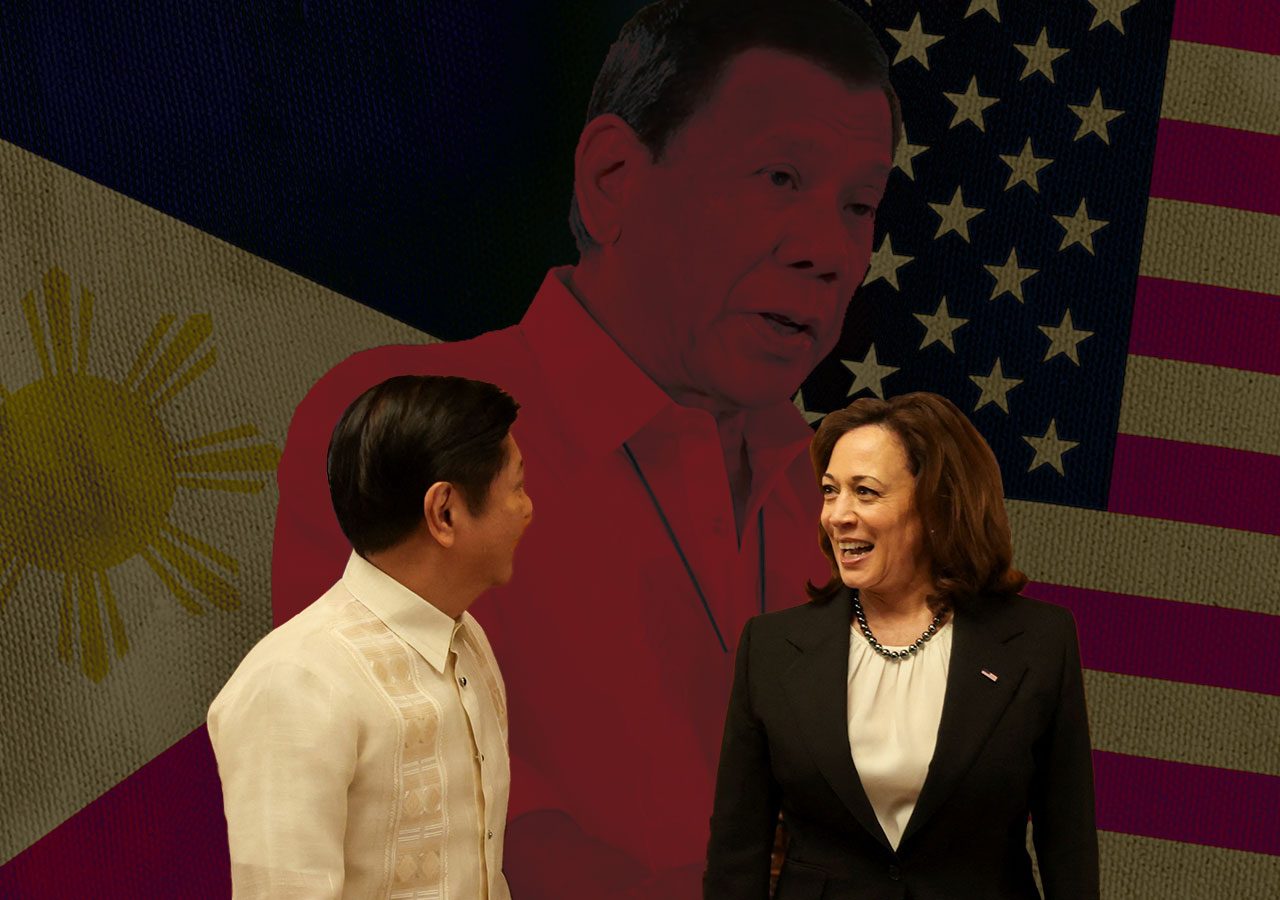
MANILA, Philippines – Just five months into his administration, President Ferdinand Marcos Jr. has seen a slew of high-level engagements between the Philippines and the United States at an unprecedented tempo.
This comes as the longtime allies seek to refresh a relationship critical to responding to growing threats in the region, after six tumultuous years under President Rodrigo Duterte who, at one point, announced his military and economic “separation” from the United States.
The latest American official to visit the Philippines is Vice President Kamala Harris, Washington’s top female leader, whose ongoing visit ushers a fervor from the US to further solidify the two treaty allies’ security ties as well as deepen economic cooperation.
Part of her trip is the announcement of updates to key military deals, and the unveiling of 17 new initiatives in health, clean energy, high-tech manufacturing, and the establishment of 5G networks – all in the span of a 3-day trip.
Keeping with a practice to go beyond capital cities in foreign trips, the Vice President is also visiting Puerto Princesa, Palawan – an island that sits at the edge of the South China Sea – to demonstrate Washington’s commitment to backing Manila in its territorial dispute with China.
Beyond the rhetoric, Harris’ presence in Palawan sends a “clear signal” that the US would take moves to both deepen and uphold alliance commitments in the South China Sea, said Gregory Poling, director of the Asia Maritime Transparency Initiative in Washington DC.
Poling told Rappler: “Any leader’s time is their most valuable asset and where they choose to spend it always sends a message. In this case the VP is saying that spending a day in Puerto Princesa is more important than anything else she could have done with that day.”
It’s all part of a renewed push from Washington to shore up ties with its oldest ally in Asia, a key relationship in the Biden administration’s strategy in the Indo-Pacific.
Before Harris, Marcos had already met with at least four senior American officials.
In June, a visit from US Deputy State Secretary Wendy Sherman put to rest questions over whether the Philippine leader would be allowed to set foot in America. Sherman had made it clear that Marcos, while in office as head of state, would enjoy immunity from a standing contempt order issued by a US court in connection with human rights class suits filed against his late father, dictator Ferdinand E. Marcos.
Leading Washington during Marcos’ inauguration, First Gentleman Douglas Emhoff personally handed the new leader an invite from US President Joe Biden to travel to Washington for a state visit. The success of the trip was among factors that led Harris to adding a Philippine stop during her current Asia tour, Reuters reported.
And as tensions roiled in Taiwan over the visit of US House of Representatives leader Nancy Pelosi last August, State Secretary Antony Blinken traveled to Manila, where he committed to strengthening military ties hand-in-hand with senior officials in the country. The Philippines and Taiwan share a sea border off the northernmost part of Luzon.
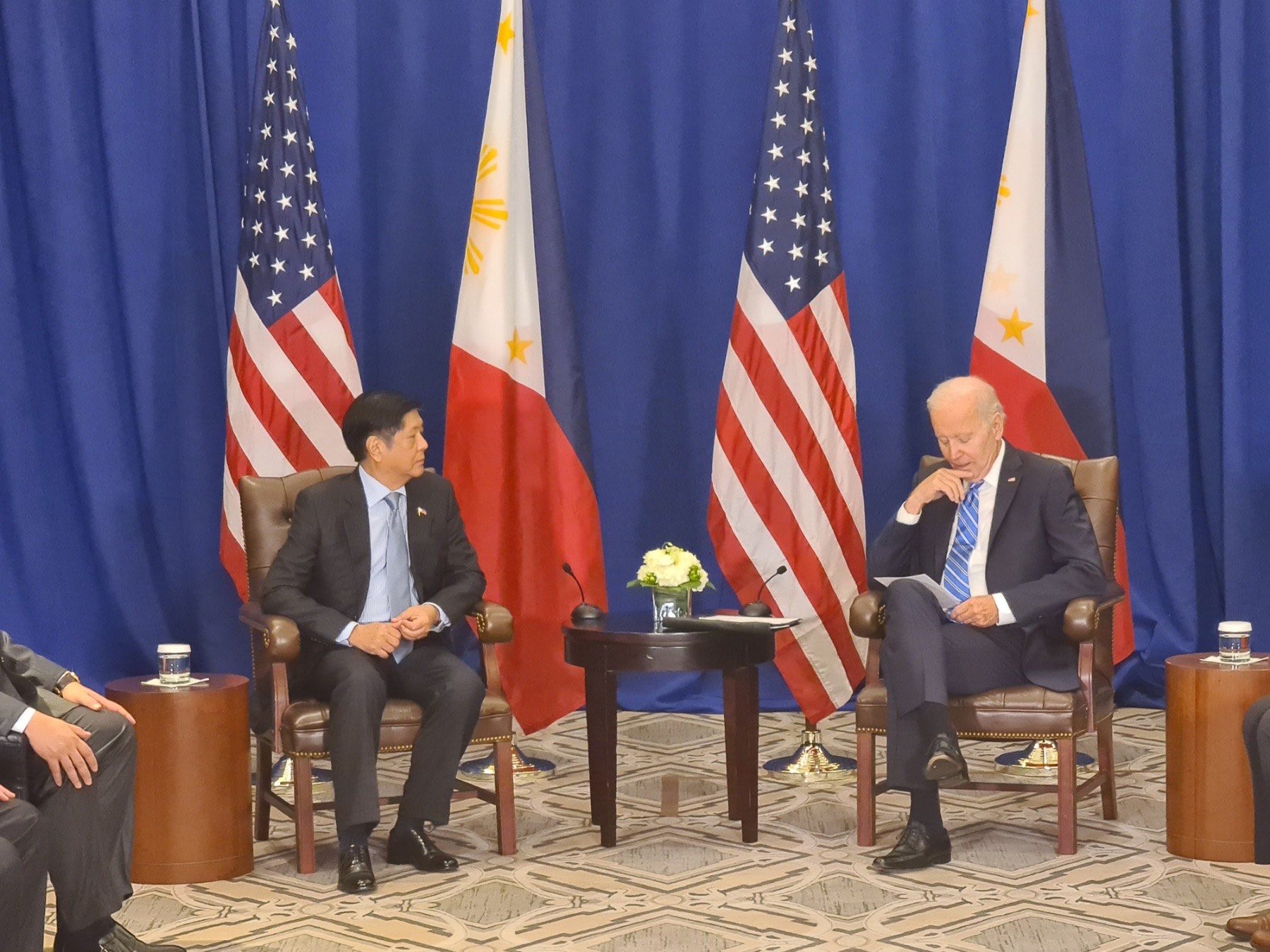
The following month then saw Marcos and Biden hold their first face-to-face meeting on the sidelines of the United Nations General Assembly in New York, where discussions among the two leaders stretched well past the half-hour initially planned for their introduction.
“They want to show that they are really going all-out to convince the Philippines it is critical,” said former Philippine ambassador to the US Jose Cuisia Jr. “We’re getting a message that the US wants to engage… and strengthen the partnership.”
The message is well received among Philippine officials, with visits like Harris’ serving as a “concrete manifestation of the Philippines’ place in the US’ radar,” a diplomatic source told Rappler.
Lessons from Duterte
Under former president Duterte, former state secretary Mike Pompeo and Austin were among the few senior officials to travel to Manila during the Philippine leader’s six-year term. Duterte, who once told former president Barack Obama to “go to hell,” had often clashed with Washington over his bloody drug campaign and vowed to never visit “lousy” America until the last days of his tenure.
Apart from his inflamed speech, Duterte had also frustrated the US, choosing instead to foster closer relations with China. In the latter half of his administration, Philippines-US ties fell to their lowest point with Duterte unilaterally abrogating the two countries’ Visiting Forces Agreement, a decision he later reversed in 2021, partly owing to increased tensions with China in the West Philippine Sea.
Foreign Secretary Enrique Manalo said the incident later provided the old allies with fresh impetus to reassess the decades-old relationship and push for closer cooperation as “equal and sovereign partners.” During a bilateral strategic dialogue in November 2021, the two countries formalized a roadmap to modernize the alliance, which included high-level visits among Philippine and US officials.
Since then, the stakes have risen for the two countries, with the Philippines poised as a strategic partner for the US and its competition with China.
“It makes sense to invest high-level attention to restore deepened cooperation across the board with this youthful, populous, prospering, and strategically located ally,” Daniel Russel, former US assistant secretary of state for East Asian and Pacific affairs, told Reuters.
On the ground, foreign trips by top US officials to the Philippines have been among the most robust signs of renewed attention. Career diplomat MaryKay Carlson, the US’ envoy to the Philippines, told reporters in a roundtable last October that with “37 years in the foreign service – and I’ve been posted to large, large postings – this level of engagement, I think, is unheard of.”
Along with the roster of high-profile visits, Carlson said, was the arrival of the US Navy secretary, senior security officials, and a “constellation of 29 stars as flag officers, three star generals, four star generals, including the Commandant of the Marine Corps.”
US officials have often cited “pent up enthusiasm,” along with the lack of physical interactions during the pandemic, among reasons behind the increased number of interactions at a senior level.
In the Philippines, many in diplomatic circles point to lessons that have emerged as the alliance withstood strain under Duterte, as well as an increasingly complex global landscape that has called for more “forward-looking” cooperation.
Although it withstood Duterte’s open hostility toward the US, “a self-defeating complacency about the alliance that threatens its utility” had been bred by coasting along for years, said Gregory Winger of the University of Cincinnati and Julio Amador, president of the Foundation for the National Interest in the Philippines. If it were to respond to emerging threats, including in Taiwan and those arising from climate change, both countries needed to evolve the partnership not only militarily, but also politically.
Speaking in a forum on Philippine-US ties last October, Manalo said, “Keenly aware of the complexities of the current geopolitical environment, President Marcos is looking to further strengthen our relationship by, in his words, ‘evolving the alliance’ that makes it more responsive to present and emerging challenges.”
He added, “From recent engagements, it is clear that both sides wish to avoid making the same missteps in the past that caused some irritants in our relations.”
Philippine ambassador to Washington DC, Jose Manuel Romualdez, was more frank. “The US is not taking us for granted,” he told Reuters.

Open opportunities
Raising hopes of a new phase in ties was Marcos himself.
At a fireside chat held before an audience at the New York Stock Exchange, Marcos said he “cannot see the Philippines in the future without having the United States as a partner.” Prior to that, Marcos told Blinken that Philippine-US ties would only grow more crucial after tensions in Taiwan demonstrated the intensity of pressure ratcheting up in the region.
“It actually has been at that level for a good while, but we got used to it and put it aside,” Marcos said at the time.
Most recently, at the Asia Pacific Economic Cooperation Forum in Thailand, he added, “The relationship between the United States and the Philippines must continue to evolve, and it will be that.”
A senior US administration official speaking to reporters on background touted Harris’ visit as an answer to Manila’s call. The Vice President’s visit, at the very least, seeks to further drive the message that the US has grown more serious in revamping ties with the Philippines.
On the economic front, room to deepen cooperation is ripe with Marcos’ New York trip bringing $3.9 billion in investment pledges across sectors that include agriculture, information technology, business process management, energy, and aviation.
Another highlight of the trip – Harris’ planned visit to Palawan – also makes it clear that the Biden administration is committed “to stand with our Philippine ally in upholding the rules-based international maritime order in the South China Sea, supporting maritime livelihoods, and countering illegal, unregulated, and unreported fishing,” the US official said.
In her scheduled speech at the Philippine Coast Guard, the Vice President is expected to reiterate the same message from Washington that the two partners’ Mutual Defense Treaty covered the South China Sea.
Still, analysts have so far viewed Harris’ decision to travel to Palawan – an island known as the nation’s last frontier – as significant since it sits on the edge of the West Philippine Sea, offering a vantage point to Philippine waters that China continued to claim illegally.
The Armed Forces of the Philippines’ Western Command, whose troops are charged with the defense of the West Philippine Sea, were also stationed in the area.
The island likewise pays home to fishing communities whose livelihood has not only been affected by fleets of foreign vessels that have crowded Philippine waters, but was also compounded by climate change.
While the move is expected to irritate Beijing, Marcos downplayed the possibility it would affect ties with China. “It is the closest area to the South China Sea, but it’s very clearly on Philippine territory. So I don’t think there should be – I don’t think it will cause problems,” he said.
Still, the gesture is a move that some would find hard to imagine nearly a decade ago when the Philippines took China to court over its incursions in the West Philippine Sea. “In the past they were not as openly supportive of our position,” Cuisia said.
With Harris setting foot in Palawan, he added, “They are in effect showing their support for our position in the West Philippine Sea, they are for respecting the international order, respecting International law.” – Rappler.com
Add a comment
How does this make you feel?
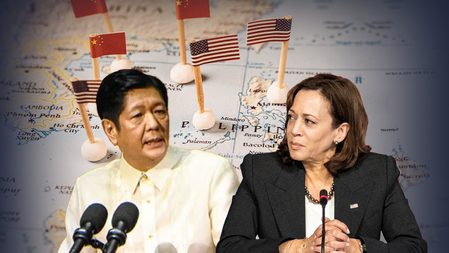
![[In This Economy] Marcos’ POGO ban is popular, but will it work?](https://www.rappler.com/tachyon/2024/07/thought-leaders-marcos-pogo-ban.jpg?resize=257%2C257&crop=255px%2C0px%2C720px%2C720px)
![[Rappler Investigates] POGOs no-go as Typhoon Carina exits](https://www.rappler.com/tachyon/2024/07/newsletter-graphics-carina-pogo.jpg?resize=257%2C257&crop=424px%2C0px%2C1080px%2C1080px)




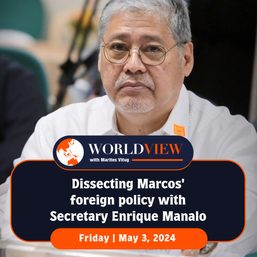
![[OPINION] Expectations for Philippines-US-Japan trilateral cooperation: A view from Japan](https://www.rappler.com/tachyon/2024/04/tl-ph-usa-jp-cooperation.jpg?resize=257%2C257&crop=447px%2C0px%2C1080px%2C1080px)
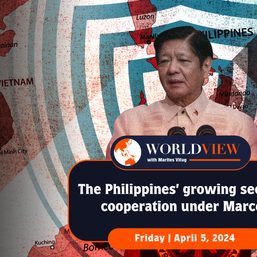
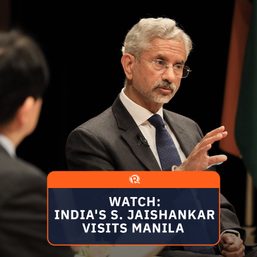





There are no comments yet. Add your comment to start the conversation.